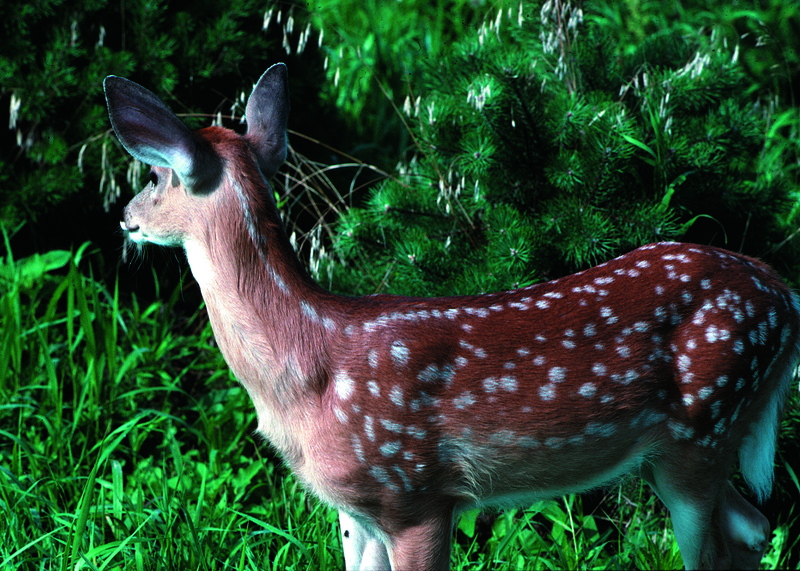The N.C. Wildlife Resources Commission recently confirmed a rare case of rabies in a deceased deer in Cherokee County.

The Commission received multiple reports of dead deer around water sources and dying deer having trouble standing up, no fear of humans and lack of coordination. Rabies, hemorrhagic disease and Chronic Wasting Disease can exhibit similar symptoms in affected deer. Commission biologists collected tissues from several of the animals and sent to a laboratory for testing by the Southeastern Cooperative Wildlife Disease Study. Of the two deer tested for rabies, only one with alopecia on its head, tested positive for rabies. A lack of hair on the head seems to be common in rabies-infected deer and was the red flag that resulted in testing the animals for rabies.
Rabies is a disease, which can affect all mammals, causing inflammation in the brain with symptoms that can include lethargy, loss of balance, unexplained aggressiveness and eye or nose discharge. Hemorrhagic disease symptoms can include depression; fever; swelling in the head, neck, tongue or eyelids; difficulty breathing; loss of appetite and no fear of humans. As symptoms worsen, fever sets in and the deer seek out water —that’s why infected deer are usually found dead around water sources. Chronic Wasting Disease affects deer, elk and moose causing a characteristic spongy degeneration of the brain of infected animals resulting in emaciation, abnormal behavior, loss of bodily functions and ultimately death.
“We rarely test deer for rabies because we generally don’t have any reason to suspect they are infected, in this case the hairless head lead us to believe rabies could be the reason for the animal’s symptoms,” according to Wildlife Commission Veterinarian Dr. Maria Palamar. “However, it is important to know that all mammals, including pets and humans, can contract rabies and taking the proper precautions is essential.”
LISTEN: Everything you wanted to know about rabies
The Commission recommends taking the following precautions to prevent disease transmission:
- Do not handle or eat any animal that is acting abnormal or appears to be sick.
- Wear latex or rubber gloves when field dressing
- Minimize the handling of the brain and spinal cord.
- Do not allow pets around your field dressing area to prevent contact with blood and other tissues.
- Wash hands, boots and instruments thoroughly after field dressing is completed.
- If you have your deer commercially processed, request your animal is processed individually and without meat from other animals.
- Use proper cooking temperatures to ensure safe food.


